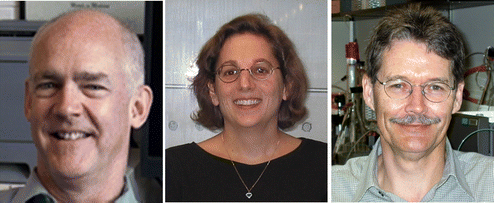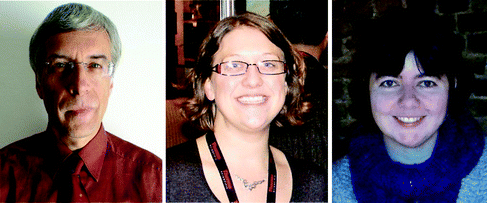Metallomics – a new look for a New Year!
As you have probably noticed, Metallomics has a new look this year. With a wonderful new style and logo, Metallomics has changed as part of the new visual identity for the Royal Society of Chemistry. We are the oldest chemical society publisher in the world, having published our first paper in 1841. Since then, the world has changed significantly, but chemistry and the chemical sciences remain as fundamental as ever. Looking at how we are perceived in the chemistry community gave us a chance to refresh our brand and identity.As an organisation we have ambitious goals to be the leading voice and trusted partner for science and humanity, and in order to do this we need to increase awareness of the Royal Society of Chemistry. We undertook large scale research to help us understand how we could develop our brand, and to this goal communicated with 7000+ individuals from our community. You may have taken part in this research through our online survey, one of the focus groups, or through a telephone interview. This research helped us to understand how we can build on our strengths, such as our international readership, fast publication times, and high-quality editorial service. Moving forward in 2014, all articles will be printed with free full colour figures with our refreshed layout. We are very proud of our heritage and even more excited about our future. We hope you enjoy the new look!
Global approaches to metals in the biosciences
2013 was another successful year for Metallomics. The 2012 Journals Citation Report® announced another growth in the Impact Factor of the journal, passing the threshold of 4 for the first time. We also had a record number of authors choosing to submit their work to the journal, resulting in more articles published in the year than ever before.As many of you will be aware, lively discussions occurred within the community about the future of the subject of metallomics, how it is defined and which areas it should encompass. We look forward to these discussions continuing in 2014 and further shaping the field of metallomics. In 2013, the Editorial Board took another look at how we describe best the scope of Metallomics for the benefit of the journal. We invite you to take a look our website.1 However, do note that the list of the subjects on the website is not exhaustive. The Editorial office will be pleased to discuss the suitability of any article that you may wish to submit, but does not seem to fit within any of the categories. From our homepage, out of necessity, a shortened description of the journal refers to Global approaches to the role of metals in the biosciences. We do not mean however to focus exclusively on metals, but include metalloids such as selenium and arsenic, and even the development of approaches to examine other elements that interact with metal ions within a biological system. As an interdisciplinary subject, we favour the term biosciences to indicate that we are not just working in the field of biology or chemistry but are truly interdisciplinary. Any comments and feedback from authors and readers alike on this description are, as always, very welcome.
Earlier in 2013, a news feature article was published in Nature in which the author attempted to sift through the thousands of ‘omes’ that exist in the literature ‘in search of the ones that matter’.2 The criteria that they chose to define a good ‘ome’ was that it should encapsulate a new focus, refer to a comprehensive collection, be easy to say and easy to understand. Our description of the scope of Metallomics aims specifically to pick up on the second of these criteria, namely the comprehensive nature, that we describe as ‘global approaches’. The nature of the metallomics field, and so ultimately the scope of Metallomics the journal, is that the entirety of the metals within a biological system is investigated. Whilst we recognise that not every article published in Metallomics will contain a comprehensive study of all the metals in a system and how they interact, and there are some excellent examples of articles that provide an insight by focusing on just one metal or element, a global approach clearly is something that we aspire to. We hope that as technology and science advance, we shall see increasingly more articles using global approaches in the journal. Indeed, in Nature ‘Ome crossword of ‘Omes that matter’, 14 Down ‘The metals and metal-containing molecules in a cell or a tissue’ is the significant field of metallomics.
The activity of the metallomics community was also noticeable this year, with the extremely successful 4th International Symposium on Metallomics held in Oviedo in Spain in July. Articles from this conference will be published in an entire themed issue, which will be available online shortly. There were also symposia focusing on aspects of metallomics at a number of international conferences worldwide in 2013. These included the 2013 Winter Conference on Plasma Spectrochemistry, Pittcon, SciX 2013, the 2013 Beijing Conference and Exhibition on Instrumental Analysis, the Metals in Biology Gordon Conference, and the International Conference on Biological Inorganic Chemistry, amongst others. A number of themed issues in 2013 in Metallomics featured plant and microbial metallomics and also the progression of the field in China and Japan. We would like to thank all our Guest Editors and authors for their hard work and assistance with putting these issues together. We hope that those issues planned for 2014 will continue to provide a showcase for emerging developments and applications.
New faces join the team
We are delighted to welcome new Editorial Board members to Metallomics, Chris Orvig from the University of British Columbia, Canada, Mike Adams from the University of Georgia, Athens, USA and Deborah Zamble from the University of Toronto, Canada. We are looking forward to working with them in the future. We would also like to take this opportunity to express our warmest thanks to Bibudhendra Sarkar and David Salt for their tenure on the Editorial Board since the launch of Metallomics. They have both contributed significantly through their support, ideas and enthusiasm. We are delighted that they will both continue to be involved with Metallomics as members of the Advisory Board. We would also like to warmly welcome new Advisory Board members David Giedroc, Indiana University, US, Chris Le, University of Alberta, Canada, Mak Saito, Woods Hole Oceanographic Institution, USA and Erik Skaar from Vanderbilt University School of Medicine, USA.Chris Orvig
Deborah Zamble
Mike Adams
In addition, the Royal Society of Chemistry is delighted to announce the appointment of Hiromitsu Urakami as the RSC Representative in Japan. He is looking forward to working with Metallomics authors, readers and referees on non-editorial matters. We thank all our Editorial and Advisory Board members for their very much appreciated hard work and dedication to the journal this past year, and look forward to working with them in 2014.
Members of the Editorial team will continue to attend conferences throughout the upcoming year, including Biometals 2014, the International Conference on Metals and Genetics, and the 2014 International Society for Zinc Biology Conference, amongst others. Please do get in touch with us if you plan to attend as we would be delighted to discuss the journal and any future developments with you.
Open Access option in Metallomics
The Royal Society of Chemistry is also supporting Open Access with authors able to choose between Gold and Green Open Access routes for publishing their article in Metallomics. To support the funder-led evolution towards Gold open access, our Gold for Gold initiative rewards all institutions that subscribe to the Royal Society of Chemistry Gold journal package, with voucher codes to make papers available via open access, free of charge.3 We are also delighted to announce that we are developing a new subject-based repository that will make it easier for researchers to find and share relevant journal articles and data from a single point of access. The Chemical Sciences Repository will offer free-to-access chemistry publications and integrated data in a single place.4 The article repository is a central point through which users can access the Royal Society of Chemistry's open access articles, or articles that must be made open access after an embargo period, such as those funded by RCUK, the Wellcome Trust or NIH.Finally, we would like to take this opportunity to thank all our authors, referees and readers for your continued support.
Wolfgang Maret, Chair, Metallomics Editorial Board
May Copsey, Editor, Metallomics
Rebecca Brodie, Deputy Editor, Metallomics
References
- http://www.rsc.org/publishing/journals/mt/about.asp .
- M. Baker, Nature, 2013, 494, 416–419, DOI:10.1038/494416a.
- http://rsc.li/goldforgold .
- http://rsc.li/repository .
| This journal is © The Royal Society of Chemistry 2014 |



